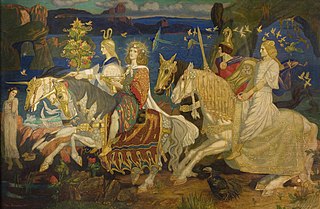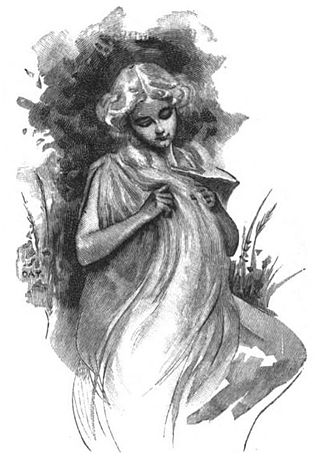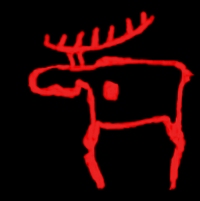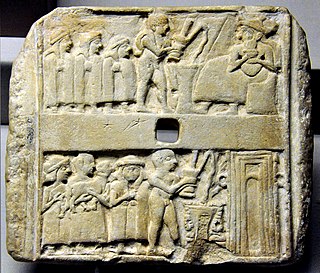
A goddess is a female deity. In many known cultures, goddesses are often linked with literal or metaphorical pregnancy or imagined feminine roles associated with how women and girls are perceived or expected to behave. This includes themes of spinning, weaving, beauty, love, sexuality, motherhood, domesticity, creativity, and fertility. Many major goddesses are also associated with magic, war, strategy, hunting, farming, wisdom, fate, earth, sky, power, laws, justice, and more. Some themes, such as discord or disease, which are considered negative within their cultural contexts also are found associated with some goddesses. There are as many differently described and understood goddesses as there are male, shapeshifting, or neuter gods.

The TuathaDé Danann, also known by the earlier name Tuath Dé, are a supernatural race in Irish mythology. Many of them are thought to represent deities of pre-Christian Gaelic Ireland.

Aztec mythology is the body or collection of myths of the Aztec civilization of Central Mexico. The Aztecs were Nahuatl-speaking groups living in central Mexico and much of their mythology is similar to that of other Mesoamerican cultures. According to legend, the various groups who became the Aztecs arrived from the North into the Anahuac valley around Lake Texcoco. The location of this valley and lake of destination is clear – it is the heart of modern Mexico City – but little can be known with certainty about the origin of the Aztec. There are different accounts of their origin. In the myth, the ancestors of the Mexica/Aztec came from a place in the north called Aztlan, the last of seven nahuatlacas to make the journey southward, hence their name "Azteca." Other accounts cite their origin in Chicomoztoc, "the place of the seven caves", or at Tamoanchan.

In Norse mythology, Sif is a golden-haired goddess associated with earth. Sif is attested in the Poetic Edda, compiled in the 13th century from earlier traditional sources, and the Prose Edda, written in the 13th century by Snorri Sturluson, and in the poetry of skalds. In both the Poetic Edda and the Prose Edda, she is known for her golden hair and is married to the thunder god Thor.
In Latvian mythology, the term Māte stands for "mother", sometimes written in English as Mahte. It was an epithet applied to some sixty-seventy goddesses. They were clearly distinct goddesses in most or all cases, so the term definitely referred to the mother-goddess of specific phenomena. According to professor Lotte Motz, scholar Haralds Biezais mentioned there were at least 70 characters in Baltic religion identified with the title of Mate.

Mixcoatl, or Camaxtle or Camaxtli, was the god of the hunt and identified with the Milky Way, the stars, and the heavens in several Mesoamerican cultures. He was the patron deity of the Otomi, the Chichimecs, and several groups that claimed descent from the Chichimecs. Under the name of Camaxtli, Mixcoatl was worshipped as the central deity of Huejotzingo and Tlaxcala.

Traditional Sámi spiritual practices and beliefs are based on a type of animism, polytheism, and what anthropologists may consider shamanism. The religious traditions can vary considerably from region to region within Sápmi.

Baltic Finnic paganism, or BalticFinnic polytheism was the indigenous religion of the various of the Baltic Finnic peoples, specifically the Finns, Estonians, Võros, Setos, Karelians, Veps, Izhorians, Votes and Livonians, prior to Christianisation. It was a polytheistic religion, worshipping a number of different deities. The chief deity was the god of thunder and the sky, Ukko; other important deities included Jumala, Ahti, and Tapio. Jumala was a sky god; today, the word "Jumala" refers to a monotheistic God. Ahti was a god of the sea, waters and fish. Tapio was the god of the forest and hunting.

Mother Nature is a personification of nature that focuses on the life-giving and nurturing aspects of nature by embodying it, in the form of a mother or mother goddess.
Ancient Semitic religion encompasses the polytheistic religions of the Semitic peoples from the ancient Near East and Northeast Africa. Since the term Semitic represents a rough category when referring to cultures, as opposed to languages, the definitive bounds of the term "ancient Semitic religion" are only approximate but exclude the religions of "non-Semitic" speakers of the region such as Egyptians, Elamites, Hittites, Hurrians, Mitanni, Urartians, Luwians, Minoans, Greeks, Phrygians, Lydians, Persians, Medes, Philistines and Parthians.

The Aztec religion is a polytheistic and monistic pantheism in which the Nahua concept of teotl was construed as the supreme god Ometeotl, as well as a diverse pantheon of lesser gods and manifestations of nature. The popular religion tended to embrace the mythological and polytheistic aspects, and the Aztec Empire's state religion sponsored both the monism of the upper classes and the popular heterodoxies.
Jiella was a multi-generational Saami pop group formed in Karigasniemi, Utsjoki, Finland in 1999, led by singer-songwriter and musician Niilo Rasmus. The band was at the forefront of the modernization of the traditional luohti of the Saami living along the Teno, when they started to incorporate Western musical elements such as pop and disco into the traditional luohti. Their entire repertoire is in Northern Saami and is still an integral part of the play lists on Saami radio stations today.

Wiccan views of divinity are generally theistic, and revolve around a Goddess and a Horned God, thereby being generally dualistic. In traditional Wicca, as expressed in the writings of Gerald Gardner and Doreen Valiente, the emphasis is on the theme of divine gender polarity, and the God and Goddess are regarded as equal and opposite divine cosmic forces. In some newer forms of Wicca, such as feminist or Dianic Wicca, the Goddess is given primacy or even exclusivity. In some forms of traditional witchcraft that share a similar duotheistic theology, the Horned God is given precedence over the Goddess.

A weather god or goddess, also frequently known as a storm god or goddess, is a deity in mythology associated with weather phenomena such as thunder, snow, lightning, rain, wind, storms, tornadoes, and hurricanes. Should they only be in charge of one feature of a storm, they will be called after that attribute, such as a rain god or a lightning/thunder god. This singular attribute might then be emphasized more than the generic, all-encompassing term "storm god", though with thunder/lightning gods, the two terms seem interchangeable. They feature commonly in polytheistic religions, especially in Proto-Indo-European ones.
A triad, in a religious context, refers to a grouping of three gods, usually by importance or similar roles. A triad of gods were usually not considered to be one in the same being, or different aspects of a single deity as in a Trinity or Triple deity.

Sumerian religion was the religion practiced by the people of Sumer, the first literate civilization found in recorded history and based in ancient Mesopotamia, and what is modern day Iraq. The Sumerians widely regarded their divinities as responsible for all matters pertaining to the natural and social orders of their society.

Norse, Nordic, or Scandinavian mythology, is the body of myths belonging to the North Germanic peoples, stemming from Old Norse religion and continuing after the Christianization of Scandinavia as the Nordic folklore of the modern period. The northernmost extension of Germanic mythology and stemming from Proto-Germanic folklore, Norse mythology consists of tales of various deities, beings, and heroes derived from numerous sources from both before and after the pagan period, including medieval manuscripts, archaeological representations, and folk tradition. The source texts mention numerous gods such as the thunder-god Thor, the raven-flanked god Odin, the goddess Freyja, and numerous other deities.

Akan religion comprises the traditional beliefs and religious practices of the Akan people of Ghana and eastern Ivory Coast. Akan religion is referred to as Akom. Although most Akan people have identified as Christians since the early 20th century, Akan religion remains practiced by some and is often syncretized with Christianity. The Akan have many subgroups, so the religion varies greatly by region and subgroup. Similar to other traditional religions of West and Central Africa such as West African Vodun, Yoruba religion, or Odinani, Akan cosmology consists of a senior god who generally does not interact with humans and many gods who assist humans.
The bon-puri are Korean shamanic narrative recited in the shamanic rituals of Jeju Island, to the south of the Korean Peninsula. Similar shamanic narratives are known in mainland Korea as well, but are only occasionally referred to as bon-puri.












